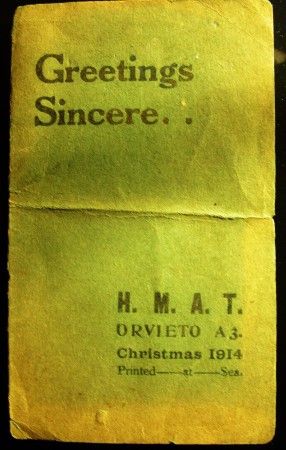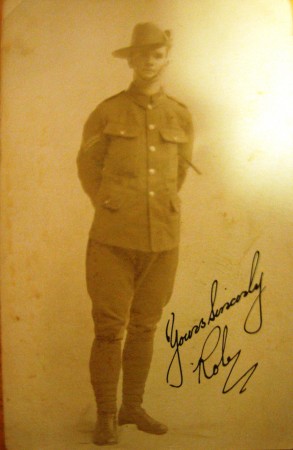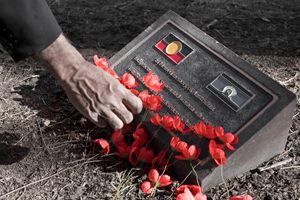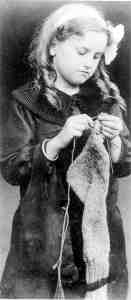WWI Stories – Private Patrick Gorman
June 11, 2014
Maryanne Rodwell shares the story of her grandfather, Patrick Gorman and wishes to remember not only him, but the other men of her family who served their country at times of war.
Patrick Gorman, my mother’s father, did not really perform any act of heroism as such, but was brave enough to enlist at what could be called “a mature age” of 43 years and 9 months, leaving behind his wife Coretta and five children: Charles, Edward, Theresa (my mother, who was aged ten when her father died), Kathleen and Fred. Private Patrick Gorman, Service Number 159, embarked from Victorian shores on the HMAT Ulysses.
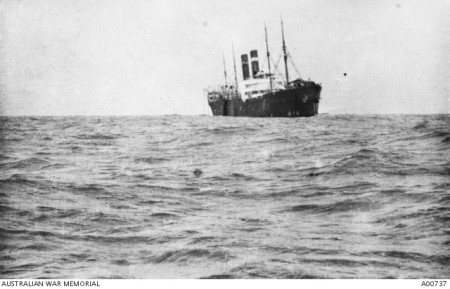 Patrick Gorman, born in Melbourne, did not arrive at the battlefield of Gallipoli. Along with many others, he drowned when the troopship he was on – the “Southland” – was torpedoed in the Aegean Sea near Lemnos on 2nd September 1915 on its way to Gallipoli. Of the many books written about Gallipoli and the First World War I have only come across two that refer to the incident of the Southland in broader detail: the history of the 21st Battalion “Red and Black Diamond”, and “Boy soldier” by James Martin, in which my grandfather Patrick Gorman even rates a mention.
Patrick Gorman, born in Melbourne, did not arrive at the battlefield of Gallipoli. Along with many others, he drowned when the troopship he was on – the “Southland” – was torpedoed in the Aegean Sea near Lemnos on 2nd September 1915 on its way to Gallipoli. Of the many books written about Gallipoli and the First World War I have only come across two that refer to the incident of the Southland in broader detail: the history of the 21st Battalion “Red and Black Diamond”, and “Boy soldier” by James Martin, in which my grandfather Patrick Gorman even rates a mention.
36 servicemen died when the Southland was torpedoed: fourteen by the explosion and twenty-two by drowning, which included Brigadier Colonel Linton and my grandfather.
 I am lucky that I have two of the three original medals awarded to Patrick Gorman, which I proudly wear every ANZAC and Remembrance Day. I also have the “Dead Man’s penny” awarded to his widow, as well as some tiny silver medals with red, white and blue ribbons on them, and a tiny silver “Papal” medal with a yellow ribbon because he was a Catholic.
I am lucky that I have two of the three original medals awarded to Patrick Gorman, which I proudly wear every ANZAC and Remembrance Day. I also have the “Dead Man’s penny” awarded to his widow, as well as some tiny silver medals with red, white and blue ribbons on them, and a tiny silver “Papal” medal with a yellow ribbon because he was a Catholic.
I try to march under the 21st Battalion banner each ANZAC Day, then race back to march for my father with his unit – the 4th Anti-Tankers, but given the times between the two units are getting closer – and I’m getting older – it makes for a hard decision on which banner to march for each year. I’ll be at a loss when I discover who, on my mother’s side, fought in the Boer War.
I have now discovered that not only did my grandmother have her husband, Patrick Gorman, serving in the First World War, but she also had a son from her first marriage serving as well, a Private Robert George Rice.
I would like to honour the memory of,not only Patrick Gorman, Robert George Rice and John Murphy, but also a son-in-law of my grandmother’s – a John Dobbie.
In memory of –
Private Patrick Gorman – Service No. 159 – 21st Battalion A Coy. Commemorated at Helles Memorial. Panel 201-204. No 93.
Robert George Rice – Service No. 2358. 4th Australian Division – Field Battery AASC 14th Battalion (above photos)
Private John Dobbie – Service No 5085. Driver. 46th Battalion
John P Murphy – 21st Battalion




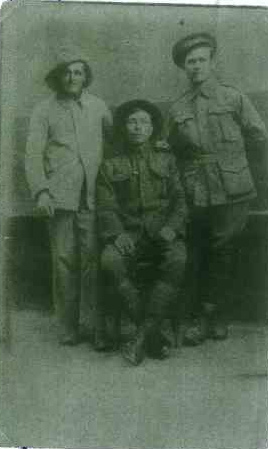

 War was no stranger to the family – before World War One, my great-grandfather was a member of the Suffolk Regiment and saw service in the Boer War, Burma and Egypt as a mounted soldier
War was no stranger to the family – before World War One, my great-grandfather was a member of the Suffolk Regiment and saw service in the Boer War, Burma and Egypt as a mounted soldier